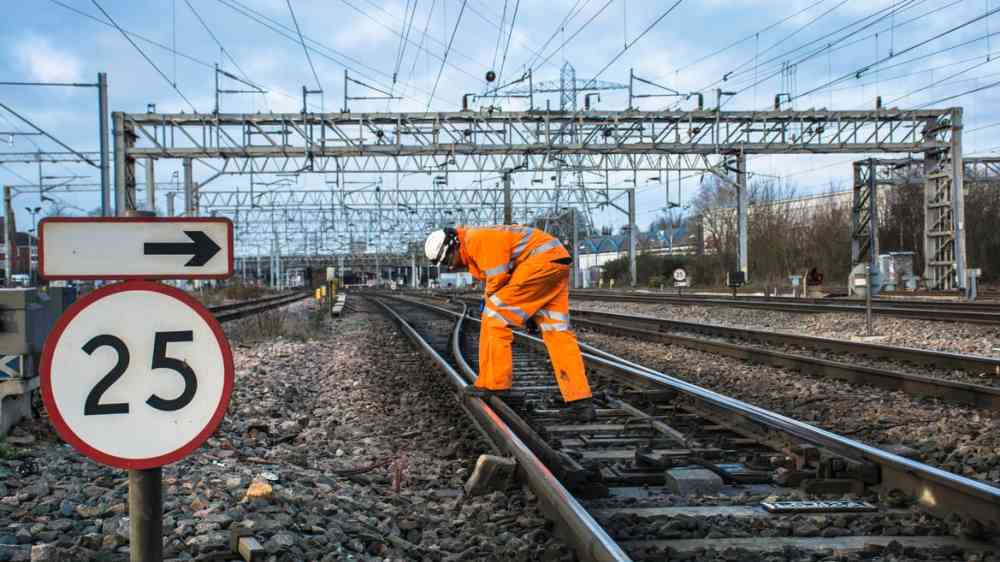Rail industry urged to consider safety risks of space weather

Train accidents could be caused by solar storms switching signalling from red to green according to new research examining the impact of space weather.
Solar storms can trigger powerful magnetic disturbances on Earth, creating geomagnetically induced currents (GICs) which could potentially interfere with electricity transmission and distribution grids.
A team led by PhD researcher Cameron Patterson and Professor Jim Wild from Lancaster University modelled how GICs flowed through the track circuits of AC electrified lines powered with overhead cables.
Using two routes - the Preston to Lancaster section of the West Coast Main Line, and the Glasgow to Edinburgh line – the team modelled how GICs induced in the rails could cause rail signalling to malfunction.
There are more than 50,000 signalling track circuits in the UK, where the signal is controlled by an electrical circuit between the rails.
Physics PhD researcher Cameron Patterson said: “Crucially, our research suggests that space weather is able to flip a signal in either direction, turning a red signal green or a green signal red. This is obviously very significant from a safety perspective.
“By building a computer model of the signalling track circuits using realistic specifications for the various components of the system, we found that space weather events capable of triggering faults in these track circuits are expected in the UK every few decades.”
Cameron’s earlier research in the journal Space Weather explored what is known in the industry as “right side” failures, where the signal is switched from green to red.
This is a fail-safe scenario but the converse “wrong side” failures - when the signal goes from red to green - are much more hazardous.
This latest study, also in Space Weather, shows that “wrong side” failures could occur at a lower geoelectric field strength than for “right side” failures, meaning a weaker geomagnetic storm could more easily trigger “wrong side” failures.
It was estimated that, for the lines studied, “wrong side” failures could occur due to a geomagnetic storm with a frequency of about one or two decades.
The analysis was also performed for once-in-a-century extreme event, and it was shown that it could potentially cause many malfunctions of both types throughout the lines in both directions of travel, depending on the number of trains on the line at that time.
Cameron said: “When we experience severe space weather which happens every few decades or extreme space weather seen every century or two, then there is a potential for significant signalling misoperation, which has an obvious safety impact.”
There have been several examples of space weather impacting power grids in the last few decades, including power outages affecting millions across the Canadian province of Quebec in 1989 and the Swedish city of Malmo in 2003.
There are also historic examples of space weather interfering with railway signalling as far back as the nineteenth century. And in 1859, a massive solar eruption triggered a geomagnetic storm that disrupted telegraph lines across the world. The team also assessed the impact of a solar storm of the size of the 1859 event, predicting that it would cause widespread problems with signalling on both lines studied.
Cameron said: “Our research shows that space weather poses a serious, if relatively rare, risk to the rail signalling system, which could cause delays or even have more critical, safety implications. This natural hazard needs to be taken seriously. By their nature, high-impact, low-frequency events are hard to plan for, but ignoring them is rarely the best way forward.
Jim Wild, Professor of Space Physics at Lancaster University said: “Other industries such as aviation, electricity generation and transmission, and the space sector are considering the risks to their operations, and exploring how these might be mitigated. It’s important that the rail sector is included in this planning.”
“As our understanding of the space weather hazard improves, it’s possible to consider how to reduce the risks. In future, we could see space weather forecasting being used make decisions about limiting railway operations if an extreme event is expected, just as meteorological forecasts are used currently."
Severe space weather is included in the UK Government’s National Risk Register for Civil Emergencies which lists the risk posed to the UK’s economy and society as “significant”.